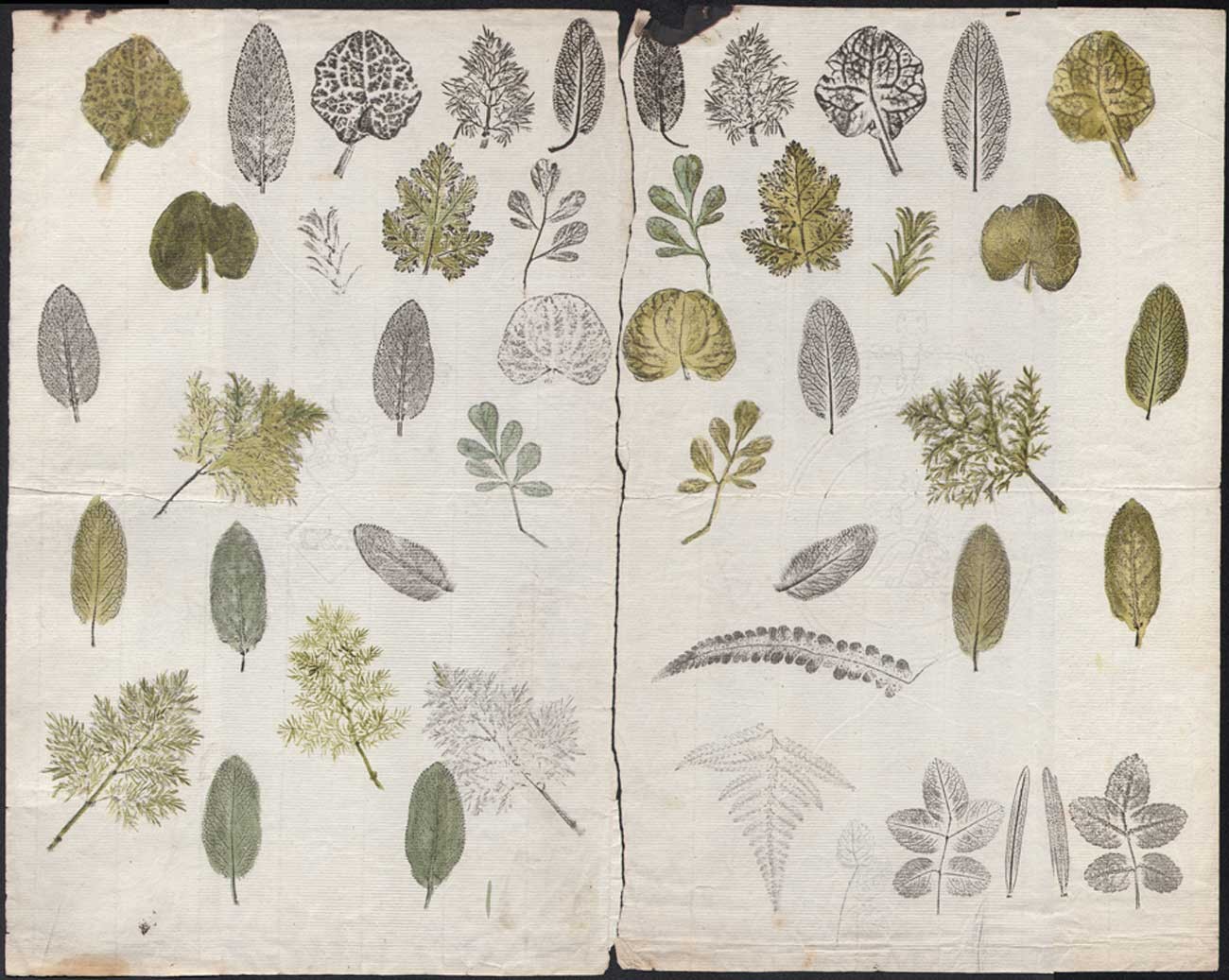
Nature Prints
Nature Printing
A rare surviving example of multiple nature prints have been made by means of impressing onto this leaf of laid English paper (ca. 1775-1825) watermarked with a Britannia shield (right of separation) and C & S topped by a coronet. (left of separation)
Made most likely by an English artist, craftsman or even hobbyist, the subject matter of unknown grass and leaf cluster specimens with selective hand-coloring was done with the paper successively folded multiple times. For example, in the bottom right hand corner can be seen the recto and verso of a stem of grass and small cluster of five leaves first done by itself. With the separated paper at the middle acting as a border, (it may have been torn deliberately when making the impressions or it became separated over time) an additional impression using 17 individual leaf specimens laid face down on the right hand side of the paper had the left hand side of the sheet folded over to make the overall impression.
How this was done is neatly summarized by the English Aesthetic Movement designer Christopher Dresser (1834-1904) who addressed an 1857 meeting of the Royal Society of the Arts on the art of Nature Printing with the following historical account of its origins:
The earliest mode with which we are acquainted of producing impressions of plants was this:—The plant, after being dried, was held over the smoke of a candle or oil lamp, when it became blackened by a deposit of soot, after which it was placed between two sheets of paper and rubbed with a smoothing-bone, which caused the soot to leave the prominences of the leaf and adhere to the paper. In this way an impression of the plant was produced. This method of procuring impressions was employed as early as the year A.D. 1650.
Joseph Breintnall, Philadelphia merchant & Amateur Naturalist
In America, nature printing was brought to a high art between the years ca. 1731 – ca. 1742 by Joseph Breintnall, a colleague of Benjamin Franklin: “nature prints of leaves produced by inking both sides of the specimen, placing it between a folded sheet of paper, and pulling the sheet through a printing press” is how the Library Company of Philadelphia explains the process as executed by Breintnall, which owns two oversized volumes of his nature prints. They include the following biographical information on him on their website:
A founder and secretary of the Library Company of Philadelphia, he engaged in the study of botany through Peter Collinson, the library’s London book agent. Between circa 1731 and circa 1744, he created hundreds of leaf prints as records of botanical specimens he gathered himself and from networks. Breintnall also most likely used his experience with leaf printing to assist Franklin in the creation of a metal cast of a leaf impression used to print currency incapable to be counterfeited.
Wikipedia, for their entry on Breintnall further notes: “These early Nature prints were sent to English naturalists who were increasingly curious about American plant biology. Together they sent nature prints which were printed directly from inked leaves to English naturalists”
The Library Company has digitized both volumes, featuring 368 prints. They can be seen here.